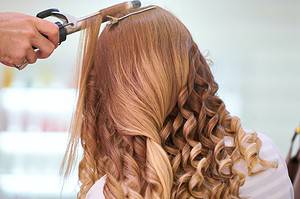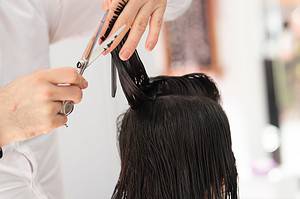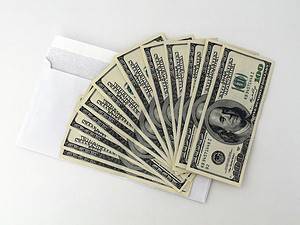A recent US National Institute of Health (NIH) study links hair straighteners to an increased risk of uterine cancer.
This shocking information was the foundation for lawsuits against companies that manufacture hair straighteners, including L’Oréal and Strength of Nature.
You could have a strong case if you used hair straighteners and acquired uterine cancer, breast cancer, or uterine fibroids.
But before filing a hair straightener lawsuit, you might want to know, “which chemicals are linked to hair straightener cancer?
This article will discuss the various cancer-causing chemicals in hair straightener products. Read on to discover whether these chemicals were behind your cancer diagnosis and establish your eligibility for compensation.
Studies Linking Hair Straightener Chemicals to Cancer
Research studies have attributed some malignancies to chemicals in hair products. Most of these studies base their conclusions on the Sister Study, which analyzed many women over ten years.
Hair straightener and uterine cancer
The National Institute of Health published unsettling findings linking hair straighteners to cancer.
According to the study, women who used particular hair straighteners were more likely to get uterine cancer than those who did not.
The research examined additional hair products, including dyes and bleaches but did not find a connection between them and cancer.
Over 33,500 American women took part in the study. Researchers analyzed the data from a different study to determine the risk factors for breast cancer and other illnesses.
After monitoring them for more than ten years, the researchers found that several women developed uterine cancer.

Additional research showed that the risk of uterine cancer was higher in women who used hair relaxers more than four times a year than in women who never used them.
While uterine cancer is uncommon, thousands of women suffer from it. Research shows that incidences have been progressively increasing in the US, particularly among black women.
The use of hair straighteners may be one of the causes. Generally, the structure of black women’s hair makes them more likely to utilize these products.
Researchers believe some ingredients (phthalates, formaldehyde, parabens, and metals) may be partly to blame for the increased risk of cancer.
However, they could not determine the specific brands of straighteners used by the study’s female participants.
Hair straightener and breast cancer
A study reported that hair relaxers and hair dye chemicals might increase breast cancer risk. About a third of women over the age of 18 use hair dye. They also frequently use hair straighteners.
Black women, compared to other races, are more prone to use these products because of the nature of their hair. In fact, about 75% of black women use hair relaxers, according to research.
Hair straightening products contain more than 5,000 compounds, most of which could be toxic. Some of these chemicals alter hormone balance, while others have been linked to breast cancer.
Formaldehyde, a cancer-causing chemical, is present in most of these products.
Some studies link formaldehyde to endometriosis and uterine fibroids. Unfortunately, these malignancies are mainly affecting women of childbearing age.
Hair straightener and uterine fibroids
Unlike rare uterine cancer, uterine fibroids are pretty prevalent in women. Although benign, these tumors can impair someone’s quality of life and require surgery.
Moreover, fibroids might impact a person’s fertility. Uterine fibroids are the main reason for hysterectomies in the United States. After this treatment, women frequently suffer severe mental and physical trauma.

According to studies, uterine fibroids are substantially more common in Black women than in other populations. Hair relaxers could be a contributory factor to this statistic.
How Do Hair Straighteners Cause Cancer?
Hair relaxers contain numerous toxic chemicals. The products change the structure of your hair and straighten it.
Most hair relaxers contain endocrine-disrupting chemicals called phthalates. These substances affect hormone balance and may cause the following:
- Breast cancer
- Fertility issues
- Obesity
- Asthma
- Problems with development in children
When a woman applies a hair relaxer, most of the product comes in contact with the skin or scalp. Such exposure may be enough to increase the likelihood of developing cancer.
Formaldehyde is another chemical found in hair relaxers. Several studies have shown a connection between continuous exposure to formaldehyde and an increased risk of developing certain cancers.
Hair Straightener Lawsuits
Women who have been using hair straighteners are actively filing product liability lawsuits against such manufacturers as:
- L’Oréal
- Soft Sheen Carson
- Dabur
- Namaste Laboratories
- Godrej Consumer Products
- Strengths of Nature
- The cancer-causing products include:
- Dark & Lovely
- Optimum
- Bantu
- ORS Olive Oil
- TCB Naturals
- Africa’s Best
- Motions
- Just for Me

Jennifer Mitchell, a Missouri resident who filed the first lawsuit, has used hair relaxers since childhood. She got a uterine cancer diagnosis at age 28 and had a hysterectomy.
The National Institutes of Health study offers a solid foundation for these legal actions.
Women who used hair straighteners and later developed uterine cancer may be entitled to financial compensation for their damages.
Damages in a Hair Straightener Lawsuit
Manufacturers are negligent when they include harmful chemicals in their products that affect consumers. If you can demonstrate this, you may be able to recover damages such as:
Economic damages
Economic damages are monetary losses you incur due to harm caused by hair relaxer use. You are entitled to reimbursement for all past, current, and future healthcare costs if diagnosed with cancer.
You may receive compensation for expenses like medical care, surgery, in-home care services, and lost income for the time you missed work to undergo treatment and recover from your injuries.
However, you must support your expenses with hard proof, including medical bills, W-2s, and insurance statements.
It is easy to gather the proof needed to demonstrate your injuries and back up your claim with the help of a lawyer. The earlier you start gathering this proof, the smoother it will be to present a compelling case.
Non-economic damages
The goal of non-economic damages compensation is to make up for intangible losses. Even though you may not return to your pre-injury quality of life, receiving compensation might allow you to cope with the impacts.
Non-economic damages include:
- Emotional distress
- Loss of enjoyment of life
- Loss of consortium
- Disfigurement
- Scarring
- Chronic pain
You must provide proof to back up these damages as well. But you need a different kind of proof regarding economic damages.

While you may support economic losses with medical bills and W-2 forms, non-economic damages may require expert witness testimony and statements from friends and family.
Women who had to have a hysterectomy and lost the ability to bear children due to uterine cancer caused by hair straighteners may recover substantial non-economic damages.
Punitive damages
In exceptional circumstances, the court may grant punitive damages. That usually happens when the court finds the defendant guilty of gross negligence.
Punitive damages target the offender and discourage repeat misconduct.
Wrongful death damages
You might be entitled to compensation if your loved one’s use of hair relaxers led to their death from cancer.
These damages may include the following:
- Funeral and burial costs
- Costs of cancer treatment before death
- Loss of financial and emotional support
You must present proof of the manufacturer’s negligence to demonstrate your entitlement to compensation for wrongful death.

You should also find out whether you qualify to claim wrongful death damages in the state where you reside.
For example, you cannot file a wrongful death lawsuit in Florida unless you are the personal representative of the decedent’s estate. A lawyer can explain the details of wrongful death and help you with the filing process.
Do I Qualify for a Hair Straightener Lawsuit?
Numerous women, particularly women of color, may qualify to file a hair straightener lawsuit, particularly women of color. Consult a qualified products liability lawyer to determine your eligibility.
Ask yourself these questions as you get ready for your initial consultation:
- Did I use any of the products mentioned above?
- When did I start using any of them?
- How often did I use the product?
- Did I get a uterine cancer diagnosis or other types of cancer?
- Do I have a family history of uterine, breast, or other cancer?
- Do I have evidence of using these products?
The answers to these queries can help the lawyer determine your eligibility. Still, the number of hair relaxer products linked to cancer is not limited to the list above. You may be eligible if you have been using another hair straightener brand.
Another thing, you will need evidence to show you used the product and your medical history or diagnosis. You may enhance your lawsuit by finding the appropriate proof with the aid of an attorney.
How to File a Hair Straightener Lawsuit
Consider contacting a lawyer if you are considering filing a hair straightener lawsuit. With legal counsel, the process could become smooth and manageable.
An experienced attorney can:
- Evaluate whether you are eligible for a hair straightener lawsuit
- Collect the relevant evidence to support your case
- File the lawsuit and relevant documents on time
- Represent you in court if necessary
- Negotiate a fair settlement
- Provide legal support throughout the case

Cancer-related hair straightener lawsuits are relatively new. But lawyers have dealt with issues identical to this before. They can ensure you don’t make any mistakes and increase your chances of receiving the compensation you deserve.
Status of Hair Straightener Lawsuits
Soon after the National Institutes of Health published the study’s findings, the first lawsuit was filed against the makers of hair straighteners. More people have been filing new hair straightener lawsuits nationwide since then.
The status of these lawsuits is continually changing. If you engage with a lawyer, they can keep track of the most recent developments and take appropriate action.
Check the contents of the products you use going forward because the study ties hair straighteners to cancer.
Hair Straightener Lawsuits: Settlements
A hair straightener lawsuit may proceed in one of two ways:
- Settlement- Your attorney bargains a settlement offer with the defendant’s counsel.
- Trial- The judge or jury determines the compensation amount in court.
You need an expert lawyer to handle your case in both scenarios. Negotiating with legal teams and arguing your case in court are complex procedures requiring much legal expertise.

Although the law permits you to defend yourself in some situations, your odds of succeeding without a lawyer are low.
Besides, it is usually advisable to have legal assistance when dealing with mighty cosmetics titans like L’Oréal. These firms hire large legal teams that work diligently to reduce the company’s financial liability.
Filing a Hair Straightener Lawsuit
Numerous lawsuits have been filed nationwide in response to the most recent study connecting hair straighteners to uterine cancer.
Some hair relaxer products put women at an increased risk for uterine and breast cancer, and the producers should be held accountable for this.
You could be entitled to compensation if you are a victim of these toxic products. At Legal Giant, we can link you up with an experienced product liability lawyer to establish your eligibility and know your legal options.
Our partner attorneys will help you gather the evidence needed to prove your case, file your lawsuit, represent you in court, and get you the compensation you deserve.
Contact us for a free case evaluation.

